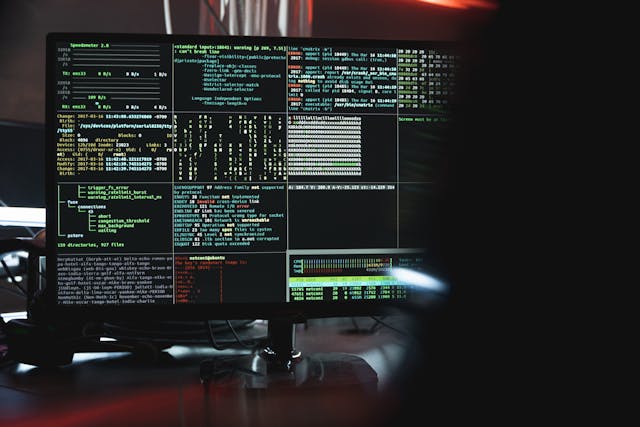Quantum programming is an arising discipline that expects to saddle the force of quantum processing by creating vigorous, proficient, and adaptable programming arrangements. As quantum PCs change from hypothetical develops to pragmatic instruments, the requirement for particular computer programming rehearses turns out to be progressively basic. This article investigates the essentials of quantum computer programming, its difficulties, and its expected effect on different businesses.
Prologue to Quantum Figuring
Quantum figuring use the standards of quantum mechanics to perform calculations that would be infeasible for traditional PCs. Not at all like traditional pieces, which address either 0 or 1, quantum bits (qubits) can address both 0 and 1 all the while, because of the rule of superposition. Also, qubits can be trapped, meaning the condition of one qubit is straightforwardly connected with the condition of another, no matter what the distance isolating them. These interesting properties empower quantum PCs to tackle specific issues dramatically quicker than traditional PCs.
The Requirement for Quantum Programming
The advancement of quantum PCs presents new difficulties that old style programming can’t address. Quantum calculations work on standards on a very basic level not quite the same as those of traditional calculations. In this manner, the plan, execution, and testing of quantum programming require particular information and methods.

Quantum programming incorporates a wide scope of exercises, including:
Calculation Configuration: Making effective quantum calculations that can use the force of quantum calculation.
Programming Dialects: Growing undeniable level dialects and instruments that work with the programming of quantum PCs.
Mistake Adjustment: Executing blunder revision instruments to relieve the impacts of quantum commotion and decoherence.
Reproduction and Check: Recreating quantum calculations on old style PCs and confirming their accuracy.
Quantum Calculation Plan
Planning calculations for quantum PCs includes utilizing quantum peculiarities like superposition, trap, and impedance. Probably the most notable quantum calculations include:
Shor’s Calculation: Effectively factors huge numbers, representing a danger to traditional encryption strategies.
Grover’s Calculation: Gives a quadratic speedup to unstructured inquiry issues.
Quantum Fourier Change (QFT): Structures the reason for the overwhelming majority quantum calculations, including Shor’s.
Quantum calculation configuration requires a profound comprehension of both quantum mechanics and computational intricacy. Engineers should consider the restrictions of current quantum equipment, for example, the quantity of qubits and door devotions, while planning calculations.

Quantum Programming Dialects
To work with the improvement of quantum programming, a few quantum programming dialects and systems have been made. These include:
Qiskit: An open-source quantum figuring programming advancement system from IBM.
Cirq: A Google-created system for making, mimicking, and executing quantum circuits.
Microsoft Q#: A quantum programming language incorporated with Visual Studio, intended for composing versatile quantum calculations.
These dialects give reflections that permit designers to zero in on the coherent construction of quantum calculations as opposed to the fundamental equipment subtleties. They likewise incorporate libraries and apparatuses for mimicking quantum circuits on old style PCs, empowering the turn of events and testing of quantum programming without prompt admittance to quantum equipment.
Quantum Mistake Adjustment
Quantum PCs are profoundly vulnerable to blunders because of quantum decoherence and commotion. Quantum mistake adjustment (QEC) is fundamental for building dependable quantum frameworks. Not at all like traditional blunder revision, which can essentially copy pieces and use greater part casting a ballot, quantum mistake rectification should represent the no-cloning hypothesis, which expresses that an erratic obscure quantum state can’t be replicated.
Quantum mistake remedy includes encoding quantum data into a bigger quantum framework, empowering the recognition and rectification of blunders without straightforwardly estimating the quantum state. Famous QEC codes include:
Shor Code: The main quantum mistake rectifying code, which safeguards a solitary qubit of data by encoding it into nine physical qubits.
Steane Code: A more proficient code that encodes one intelligent qubit into seven physical qubits.
Surface Codes: A class of mistake revising codes that map qubits onto a 2D grid, offering down to earth blunder rates for versatile quantum figuring.
Powerful mistake rectification is essential for the pragmatic execution of quantum calculations and the drawn out suitability of quantum registering.

Recreation and Confirmation
Mimicking quantum calculations on traditional PCs is a fundamental stage in the improvement of quantum programming. Old style reproductions permit scientists to test and troubleshoot quantum calculations prior to conveying them on genuine quantum equipment. Nonetheless, recreating quantum frameworks is computationally concentrated, as the state space of a quantum framework develops dramatically with the quantity of qubits.
A few recreation instruments and stages have been created to help with this cycle, including:
Quantum Definite Reproduction Toolbox (Journey): An elite exhibition test system for quantum circuits.
ProjectQ: An open-source programming structure for quantum processing created at ETH Zurich.
Quipper: A practical programming language for quantum registering with an emphasis on circuit portrayal and control.
Confirmation of quantum programming includes guaranteeing that the quantum calculations proceed as planned and that the execution is liberated from mistakes. This is trying because of the probabilistic idea of quantum estimations and the intricacy of quantum frameworks. Strategies, for example, formal check, which utilizes numerical techniques to demonstrate the accuracy of calculations, are being adjusted to the quantum space.
Challenges in Quantum Programming
Quantum programming faces a few one of a kind difficulties:
Restricted Equipment: Current quantum PCs have a set number of qubits and are inclined to blunders, confining the intricacy of executable quantum calculations.
Interdisciplinary Information: Creating quantum programming requires mastery in quantum mechanics, software engineering, and designing, making it a profoundly particular field.
Mistake Rates: High blunder rates and the requirement for mistake adjustment increment the intricacy of quantum programming advancement.
Adaptability: Guaranteeing that quantum calculations and programming can scale with propels in quantum equipment is a continuous test.

Future Headings and Effect
Regardless of these difficulties, quantum computer programming holds huge potential. As quantum equipment keeps on improving, the improvement of refined quantum programming will empower leap forwards in different fields, including:
Cryptography: Quantum calculations can break old style encryption strategies, requiring the improvement of quantum-safe cryptographic methods.
Enhancement: Quantum PCs can tackle complex advancement issues more effectively than old style PCs, helping enterprises like coordinated factors, money, and assembling.
Material Science: Quantum recreations can give bits of knowledge into the way of behaving of perplexing sub-atomic frameworks, speeding up the revelation of new materials and medications.
Computerized reasoning: Quantum AI calculations can possibly improve design acknowledgment and information examination, prompting progresses in simulated intelligence.
End
Quantum computer programming is a quickly developing field that overcomes any barrier among traditional and quantum registering. By creating hearty, productive, and versatile quantum programming, architects can open the maximum capacity of quantum registering and drive development across different businesses. As quantum innovation keeps on propelling, the job of quantum programming will turn out to be progressively essential in molding the fate of calculation.
